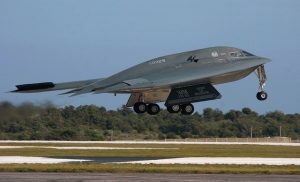 Wings are an important element of an airplane that are responsible for creating lift. As the airplane’s engines produce lift, air will flow over the top of its wings, resulting in an upward-pulling force that’s known as lift. Without wings, an airplane might be able to move forward, but it wouldn’t be able to stay in the air. With that said, not all airplanes have fixed wings. Some have blended wings that feature a unique webbed design. So, what is a blended-wing airplane?
Wings are an important element of an airplane that are responsible for creating lift. As the airplane’s engines produce lift, air will flow over the top of its wings, resulting in an upward-pulling force that’s known as lift. Without wings, an airplane might be able to move forward, but it wouldn’t be able to stay in the air. With that said, not all airplanes have fixed wings. Some have blended wings that feature a unique webbed design. So, what is a blended-wing airplane?
Overview of Blended-Wing Airplanes
Also known as a hybrid-wing body airplane, a blended-wing airplane is a type of airplane that’s characterized by webbing around the wings. They receive their namesake “blended wing” namesake from their wings that “blend” into their body. Most airplanes, of course, have well-defined wings with straight lines. Blended-wing airplanes, on the other hand, have webbing around their wings, allowing them to blend into the body.
Advantages of Blended-Wing Airplanes
Blended-wing airplanes offer several advantages over traditional fixed-wing airplanes, one of which is increased lift. If you look at the wings of a blended-wing airplane, you’ll notice they cover more surface area than those of traditional fixed-wing airplanes. With more surface area, the blended wings are capable of producing more lift.
Another advantage of blended-wing airplanes is lower fuel costs. Because blended-wing airplanes produce more lift than traditional fixed-wing airplanes, they can travel longer distances on the same amount of fuel. Some reports show that blended-wing airplanes are nearly 11% more fuel efficient than traditional fixed-wing airplanes.
It’s also worth mentioning that blended-wing airplanes are quieter than traditional fixed-wing airplanes. Most of the noise created by airplanes is the result of air sweeping over the wings. Blended-wing airplanes have a unique design that allows air to glide over the wings while producing less noise. They aren’t exactly silent, but blended-wing airplanes still produce less noise nonetheless.
The Future of Blended-Wing Airplanes
Several aerospace manufacturing companies are currently working on blended-wing airplanes. Boeing, for instance, has teamed up with NASA to develop and test scaled models of a blended-wing airplane at NASA’s research center in Langley, Virginia. In addition to Boeing, Airbus also has its eyes set on a blended-wing airplane. The European aerospace manufacturing company is working on a new blended-wing airplane known as MAVERIC that, once completed, is expected to be 20% more fuel efficient than traditional fixed-wing airplanes.



